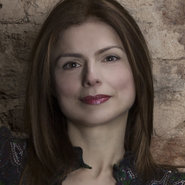 Erminia Blackden is head of strategy at Cocoon
Erminia Blackden is head of strategy at Cocoon
By Erminia Blackden The luxury sector is full of codes and signals that are transmitted through brand behavior, associations and presentation. And one of the most poignant is color. The relationship between luxury and color can be traced back to the Holy Roman Empire. The dye used to produce the vibrant purple of the emperor’s clothes was spectacularly costly to produce. It required 9,000 molluscs from the Tyre region of the Mediterranean Sea to create just one gram of Tyrian purple – it quite literally cost its own weight in gold. To this day in the Western world, the color purple is associated with royalty and wealth. Taking their lead from the Roman emperors – and the fine artists of the 17th century – luxury brands traditionally used expensive materials and pigments – principally gold and silver foils – to signal their exclusivity. But a short trawl through the logos and palettes of contemporary luxe brands could easily lead you to believe that the modern world is either black – denoting power, authority and an air of mystery – or white, signaling purity and fragility. So what is the color of luxury in the 21st century? Global to polynational To find out, you have to start with examining how luxury is changing. The world’s largest luxury brands originated in fin de siècle Europe, and subsequent international growth came from a homogeneous class of middle-aged male connoisseurs who could, to some degree, be found all over the world. Global luxury consumers were more alike than they were different. But the landscape for luxury has expanded, and with expansion comes change. The new luxurian is younger, more likely to be female and responsible for his or her own wealth creation than ever before. China competes with the United States for the title of the world’s largest economy, and is in hot pursuit for the luxury consumer crown. We are also seeing rapid growth in other eastern markets such as India, Thailand and Vietnam. The cultural cues that these new polynational luxury consumers respond to are from an altogether more diverse color palette than the traditional European hues of black and gold. For instance, the demure innocence of white in Europe represents death in China. The regal opulence of purple in some Western cultures evokes death in Brazil. Orange could symbolise energy, vitality and good health, or it could be cheap and throwaway in Hermes’ home market of France. Cartier’s red, on the other hand, is an inspired choice for the Chinese, who see the color as bringing prosperity and wealth. It fares less well in Europe where red can symbolise danger or salaciousness. Age-old issue There is also a distinct difference between how people of different ages interpret color. Younger audiences are naturally drawn to brighter hues, while older audiences prefer more subtle tones. This is caused by physical changes that occur as we age – changes that affect both vision and color perception. Additionally, it is now believed that the female eye has a greater ability to perceive color than the male. So, as the audience for luxury becomes younger and more female, we should see a shift in the way brands present themselves towards a more vibrant, optimistic palette. A brand doing just that is British department store Liberty, which introduced a new and more vivid purple to express the brand more powerfully. Gold is the new black? Yet even though most colors have radically differing meanings from market to market, there is one that tends to be fairly constant: black. With the exception of India and Thailand, where it represents evil and bad luck, respectively, black is broadly seen as being powerful and mysterious. So it is understandable that many brands feel that it is a universal shortcut to the kind of aesthetic they desire. B But will this continue to be effective, given the widening polynational market of increasingly younger luxurians? An audience which increasingly seems to favor more optimistic hues? It is interesting and instructive to note that Apple developed its rose-gold iPhone 6 specifically for the Chinese market, where the vibrant, positive color with connotations of success, achievement and triumph plays well. The colorful 5C series, on the other hand, was produced with an eye to a younger audience. SMARTER LUXURY BRANDS ought to follow suit. It is not enough to throw some black and gold at a brand and hope for the best. Marketers will need to consider their audiences’ cultural heritage and develop genuinely polynational brands. Brands will need to rely less on color to do the heavy lifting of signifying its luxury status than it once did. Rather, a more nuanced understanding of the cultural triggers of the different markets will be required. The color of luxury in the 21st century? Well, it all depends on where your market lies. Erminia Blackden is head of strategy at Cocoon, London. Reach her at [email protected].
